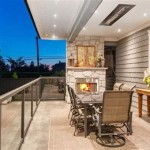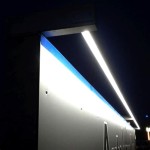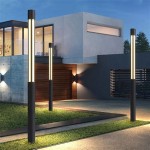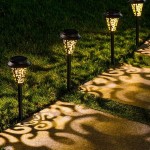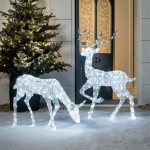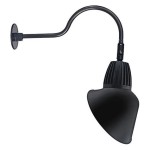Outdoor Lighting: Illuminating Your Outdoor Spaces
Outdoor lighting is an essential element in enhancing the beauty, functionality, and safety of any outdoor space. From illuminating pathways to accentuating landscaping features, outdoor lighting creates a welcoming ambiance and extends the usability of your property during evening hours. This article will delve into the various aspects of outdoor lighting, exploring its benefits, different types, and important factors to consider when choosing the right lighting for your needs.
Benefits of Outdoor Lighting
Outdoor lighting offers a multitude of benefits for both residential and commercial properties. Here are some key advantages of implementing proper outdoor lighting solutions:
- Enhanced Security: Well-lit pathways, driveways, and entrances deter potential crime and provide a sense of safety for residents and guests. Motion-activated lights can further enhance security by illuminating areas only when needed.
- Improved Aesthetics: Strategic lighting can highlight architectural features, landscaping elements, and decorative accents, creating a visually appealing and inviting atmosphere. Uplighting trees or shrubs can add depth and dimension to your landscape.
- Extended Usability: Outdoor lighting allows you to enjoy your outdoor spaces longer into the evening, creating opportunities for relaxation, entertaining, or simply enjoying the night air.
- Increased Energy Efficiency: Modern outdoor lighting fixtures often utilize energy-efficient LED technology, reducing your energy consumption and saving you money on your electricity bill.
Types of Outdoor Lighting
The world of outdoor lighting offers a wide array of options, each with its own unique characteristics and applications. Understanding the different types of outdoor lighting helps you choose the best solutions for your specific needs.
1. Ambient Lighting
Ambient lighting provides overall illumination, creating a general sense of brightness and safety. This type of lighting is often used for pathways, driveways, and larger areas. Examples include:
- Post lights: Tall lights mounted on poles, providing a wide beam of light for illuminating walkways or parking areas.
- Floodlights: Powerful lights that deliver a broad, even illumination suitable for illuminating large areas like yards or sports fields.
2. Accent Lighting
Accent lighting is used to highlight specific features, adding visual interest and depth to your outdoor space. Examples include:
- Uplighting: Directing light upwards to illuminate trees, shrubs, or architectural elements, creating a dramatic effect.
- Downlighting: Directing light downwards to create a focused beam, ideal for highlighting sculptures, water features, or garden paths.
- Path lighting: Low-voltage lights embedded in the ground, illuminating pathways and highlighting landscape features.
3. Task Lighting
Task lighting provides concentrated light for specific activities, ensuring visibility and functionality. This type of lighting is often found in:
- Outdoor kitchens: Under-cabinet lights provide illumination for food preparation, while pendant lights offer general workspace illumination.
- Patios and decks: Pendant lights or string lights create a warm and inviting atmosphere for dining or socializing.
- Outdoor workspaces: Work lights mounted on poles provide focused illumination for tasks such as gardening or repairs.
Factors to Consider when Choosing Outdoor Lighting
When choosing outdoor lighting fixtures, consider the following factors to ensure you select the right solution:
1. Purpose of Lighting
The primary purpose of your outdoor lighting will guide your choices. Determine whether you need security lighting, ambiance lighting, task lighting, or a combination of all three.
2. Location
The location of the lighting fixtures will impact the type and style of lighting you choose. Consider factors like the size of the area, existing structures, and the surrounding landscape.
3. Light Source
LED bulbs are increasingly popular for outdoor lighting due to their energy efficiency, long lifespan, and durability. However, other options like halogen or incandescent bulbs may be suitable depending on your specific needs and preferences.
4. Style and Aesthetics
The style of the lighting fixtures should complement the overall aesthetic of your outdoor space. Choose fixtures that match the architectural style of your home or the theme of your landscaping.
5. Installation
Consider the ease of installation and required wiring when selecting outdoor lighting. Some fixtures require professional installation, while others can be easily installed by homeowners with basic electrical knowledge.
6. Safety and Maintenance
Ensure that your chosen lighting fixtures meet safety standards and are properly maintained. Regularly check for loose wires, broken bulbs, and other potential hazards.

Your Guide To Functional Fabulous Outdoor Lighting
Outdoor Lighting Ideas 10 Designs Architecture Design

Classic Outdoor Lights Stunning Lighting Wide Delivery

The Best Tips And Tricks Of Outdoor Lighting Placement Bondilights

The Best Tips And Tricks Of Outdoor Lighting Placement Bondilights

Outdoor Lighting Electrical Surfcoast Electrics

How To Design The Perfect Outdoor Lighting Setting About Garden

Landscape Lighting Collective

How To Design The Perfect Outdoor Lighting Setting About Garden

Matte Black Outdoor Led Wall Lights Dixon Exterior Lighting Telbix

